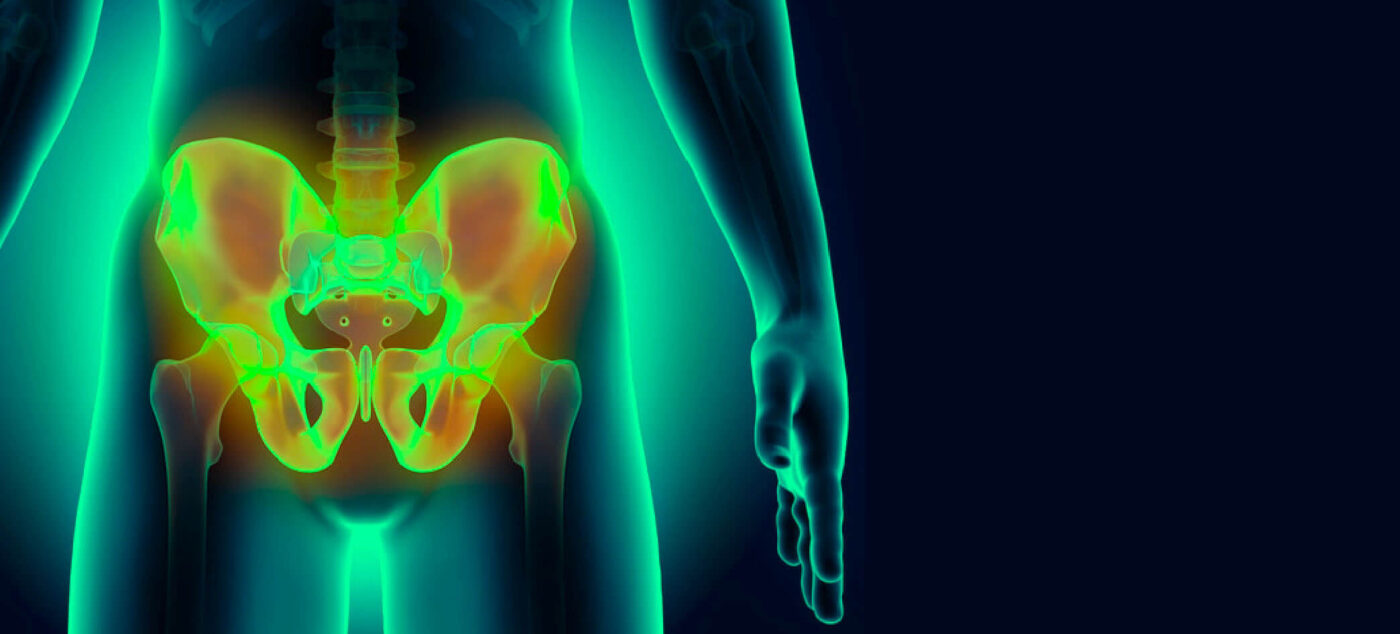Fracture Evaluation

The loadsol® system for movement analysis enables researchers to draw conclusions about the musculoskeletal system by detecting irregularities and asymmetries in movement patterns. loadsol® measures interaction between the body and ground accurately, effortlessly, and with flexibility.
What is the problem concerning hip fracture evaluation?
Fractures of the Pelvis (FFP) are difficult to classify and therefore difficult to determine a patient’s treatment options – surgical or conservative. To prevent potentially chronic hip fracture consequences, such as muscular atrophy and thrombosis, appropriate and quick classification of the fracture must occur.
Analyzing the gait patterns of patients with loadsol® sensors is a highly promising approach to support the process of quick fracture categorizations, FFP1 to FFP4.
How exactly can loadsol® support hip fracture categorization?
By placing loadsol® sensors into the footwear, differences in individual gait patterns (even when using walking aids) can be shown. Analyzing the load measured on the lower extremities with loadsol®’ in-shoe force sensors may show differences in the average peak forces of the affected and non-affected limb. It is also possible to observe differences in foot loading between fracture patterns of the FFPs.

Key features of the loadsol® system for fracture evaluation:
The loadsol® is a highly accurate measuring insole which can collect data from multiple consecutive projects remotely and in real time. The loadsol® software and the hardware are easy to use and self-explanatory. The system sensors are textile, soft, deformable, ultra-thin and designed to enable repeatedly and accurate assessment of load analysis in any environment and during any movement. With loadsol® pro, the system can be combined and synchronized with lab or other analysis tools via TTL, using the loadsync® hardware. All sensors communicate via Bluetooth® with any mobile device.

💡: Researchers noted that loadsol® can support post-surgical monitoring of the recovery process with remote, real-time data analysis of the patient.
Request a quote
Publications:

| Topic | Title | Authors Of Publication | Year Of Publication | Download |
|---|---|---|---|---|
| Fracture evaluation | Functional assessment and outcome following surgical treatment of displaced tibial plateau fractures: a retrospective analysis | Patrick Gahr, Thomas Mittlmeier, Anja Grau, Philipp K. E. Herlyn, Anja Rahn & Dagmar-C. Fischer | 2023 | |
| Fracture evaluation | Weight-bearing restrictions reduce postoperative mobility in elderly hip fracture patients | Daniel Pfeufer, Anne Zeller, Stefan Mehaffey, Wolfgang Böcker, Christian Kammerlander, Carl Neuerburg | 2019 | |
| Fracture evaluation | Early Pain Catastrophizing Exacerbates Impaired Limb Loading and 6-Minute Walk Test Distance 12 Months After Lower Extremity Fracture | Joshua J. Van Wyngaarden, Kristin R. Archer, Alex Spencer, Paul E. Matuszewski, Benjamin Brightwell, Cale Jacobs, Brian Noehren | 2021 | |
| Fracture evaluation | The grade of instability in fragility fractures of the pelvis correlates with impaired early mobilization | Leon Marcel Faust, Alexander Martin Keppler, Eduardo Suero, Johannes Gleich, Leonard Lisitano, Wolfgang Böcker, Carl Neuerburg & Daniel Pfeufer | 2022 | |
| Fracture evaluation | Load-Bearing Detection with Insole-Force Sensors Provides New Treatment Insights in Fragility Fractures of the Pelvis | Daniel Pfeufer, Christopher A. Becker, Leon Faust, Alexander M. Keppler, Marissa Stagg, Christian Kammerlander, Wolfgang Böcker, Carl Neuerburg | 2020 |


